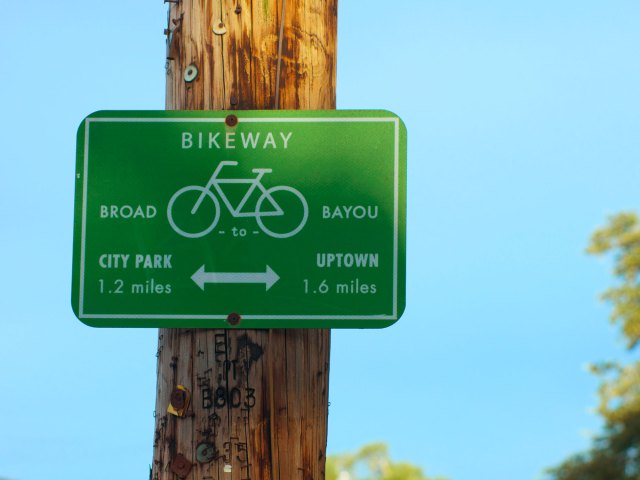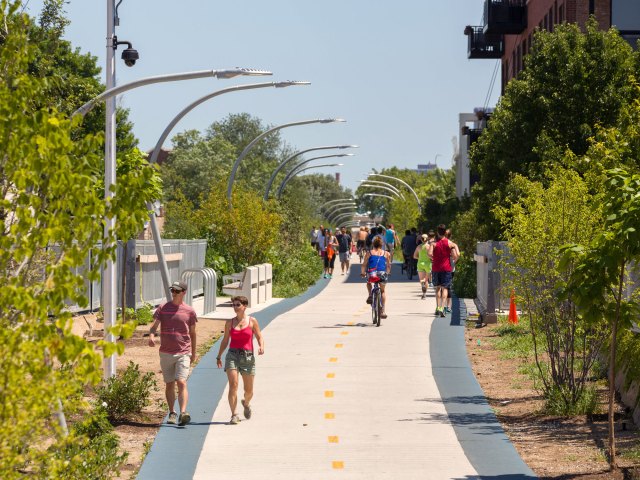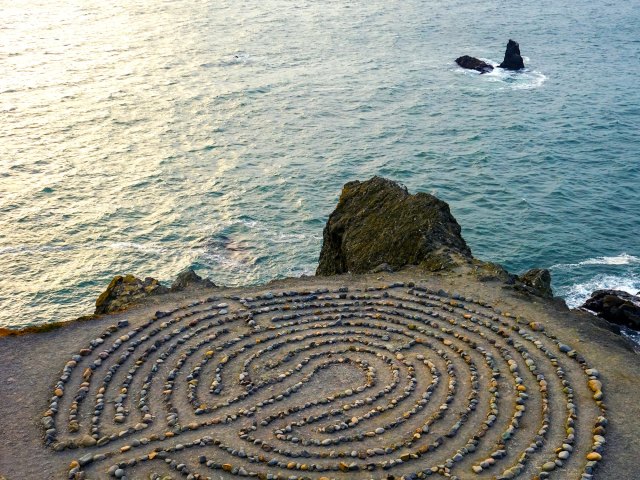Intertwining a city’s past and present, urban historic trails are one of the best ways to explore a city. Found throughout the U.S., these trails lead travelers to historical, architectural, and cultural landmarks, while also revitalizing old corridors and breathing fresh life into urban spaces. Take a hike on one of these seven historic U.S. city trails for a fascinating (and free) glimpse into the country’s urban history.
Freedom Trail – Boston, Massachusetts

One of the country’s most famous historic trails, the Freedom Trail runs for 2.5 miles through several prominent Boston neighborhoods, including Charlestown, the North End, and downtown. Marked by a red strip along the city sidewalk, the trail traces the foundations of early America and highlights 16 of the city’s most historic sites, ranging from burial grounds to meeting houses to the USS Constitution, the oldest warship still afloat, and Boston Common — established in 1634 as America’s oldest public park.
To learn more about the significance of these sites, download the trail app and head to Boston Common to start the self-guided tour. Or you can listen to anecdotes about the city’s history from knowledgeable guides dressed in colonial garb on the Walk Into History Tour. Other specialized tours include the Revolutionary Women tour, which highlights the stories of women during the war, and the Lantern Led tour, which focuses on Boston’s macabre past.
Lafitte Greenway – New Orleans, Louisiana

After opening in 2015, the Lafitte Greenway transformed an abandoned shipping passageway into a 2.6-mile-long public green space. This multi-use trail follows the pathway of the former Carondelet Canal, built in 1794 as a shipping corridor between New Orleans and Lake Pontchartrain.
Home to the city’s largest farmers market, as well as free fitness classes and community art installations, the Greenway strives to benefit the community by providing a variety of services to the public. Future plans to continue the trail’s environmental stewardship include planting 1,000 cypress trees and installing numerous bioswales to assist with stormwater management.
The 606 – Chicago, Illinois

Stretching 2.7 miles long, the 606 is built on the former tracks of Chicago’s historic Bloomingdale Line, an elevated train line initially built after the Great Chicago Fire as the city attempted to rebuild. Although it functioned for nearly a century as a way to ship manufacturing goods to the city’s northwest side, the shipping corridor became defunct in the 1990s.
Since then, the rail trail has been revitalized to connect the popular and diverse neighborhoods of Wicker Park, Bucktown, Humboldt Park, and Logan Square. Named for the 606 zip code shared by Chicago residents, the trail is set above city streets, allowing walkers, cyclists, and rollerbladers to remain unencumbered by automobile traffic. Art installations line the path, including the Graffiti Garden and Birds Watching, a 40-foot-long sculpture composed of reflective bird eyes.
San Antonio Missions Trail – San Antonio, Texas

Connecting five Spanish missions (many of which are still active churches), this 13.9-mile loop traverses through the heart of San Antonio and is open to both pedestrians and bicyclists. As each mission is approximately two to three miles apart, the San Antonio Missions Trail can be completed in segments or as one continuous journey.
The most famous mission along the trail is Mission San Antonio de Valero — better known as the Alamo, it was the site of a historic battle during the Texas Revolution in 1836. Mission San José is the city’s largest mission, while Mission Espada was Texas’ first mission. Mission Concepción is one of the oldest unrestored churches in the country, and Mission San Juan was formerly a self-sustaining artisan commune.
Asheville Urban Trail – Asheville, North Carolina

This 1.7-mile self-guided trail in historic Asheville was established in 1989 as part of local efforts to rejuvenate the city center. Now, the city’s eclectic downtown boasts a vibrant mix of restaurants, galleries, and outdoor events that draw locals and visitors alike.
Beginning at Pack Square, home to Asheville’s first log courthouse, the trail features 30 stations for visitors to learn more about the city’s past. Among these are sculptures by local artists, historic Art Deco buildings, and commemorative historical sites. Several stations also honor notable Asheville residents, such as the famed author Thomas Wolfe and Elizabeth Blackwell, the first woman in the country to attend medical school.
Lands End Trail – San Francisco, California

Open year-round to foot traffic, this 3.4-mile loop in San Francisco’s Golden Gate National Park winds through cypress trees, across open meadows, and alongside rocky cliffs. On a clear day, Lands End Trail provides views of the Pacific coastline and the Golden Gate Bridge, while historic shipwrecks can be spotted during low tide.
Nicknamed Point Lobos by Spanish settlers who frequently spotted sea lions (lobos marinos) lounging on the rocky shoreline, this region has a storied history. It was inhabited seasonally by the Ohlone tribe for thousands of years and later became a popular resort destination in the 1800s. Today, visitors can explore the ruins of Sutro Baths, a 19th-century swimming facility for the San Francisco elite, or stop by the latest iteration of the Cliff House (the original burned down in 1894).
Three Rivers Heritage Trail – Pittsburgh, Pennsylvania

The Three Rivers Heritage Trail is a 33-mile riverfront trail system in Pittsburgh. Running along the banks of its namesake waterways (the Allegheny, Monongahela, and Ohio Rivers), the urban trail is divided into non-linear segments that connect various Pittsburgh neighborhoods, business districts, and historic sites.
Popular for walking, running, and cycling, the trail extends outward from Point State Park — which marks the confluence of Pittsburgh’s three major rivers and is considered to be the city’s birthplace. The trail system also features an extensive system of interpretive signs, providing information about historic Pittsburgh sites, including the Phipps Conservatory and Botanical Gardens and the Byham Theater.
More from our network
Daily Passport is part of Inbox Studio, which publishes content that uplifts, informs, and inspires.
















